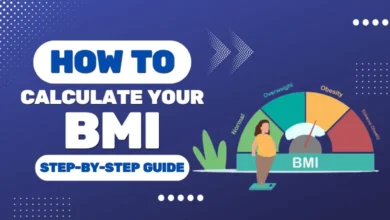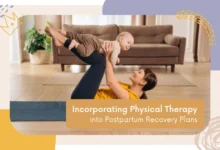
In 2021, the life expectancy in the US was 76.1 years, which dropped from 77.0 in 2020. Part of the reason why our life expectancy is dropping is we don’t take preventative healthcare seriously enough. And as a result, we succumb to things that have been preventable or curable in the first place.
Preventative healthcare doesn’t have to be anything complicated either. Scheduling a full-body checkup every year suffices, and it comes with a whole list of advantages.
Read on to see the benefits you can get from scheduling a comprehensive health checkup.
Prevent Illnesses
It’s normal to get sick throughout your life, but that doesn’t mean you have to. There are some preventable illnesses, and it’s your doctor’s job to help detect those and steer you away from them.
For example, there’s the flu; you can receive flu shots to decrease your chances of getting seriously ill. And there’s type 2 diabetes, which develops from lifestyle choices. Your doctor can evaluate your tests and lifestyle, and advise you on positive changes so your chances of getting diabetes are lower.
Detect Health Issues Early On
Chances are, you don’t have a medical background, so it can be difficult for you to tell if there’s something wrong. Even worse is, there are conditions and diseases that have silent symptoms or subtle ones that not all patients pick up on.
Even if you feel fine, it’s important to check in with your doctor regularly. When they have your records on file, it’ll be easier to tell if something’s out of the norm, even if you’re feeling ok.
Early detection of health issues can stop them from becoming large and unwieldy. It may even save your life and extend your lifespan. In addition, this can cut down on costs, as you won’t have to take as many medications or go through as many procedures and surgeries.
Monitor Current Conditions and Diseases
Many patients mistakenly believe that once they’re diagnosed with a condition or disease, there’s nothing else that can be done, and that their treatment plans are static. Therefore, they stop seeing their doctors.
However, it’s in your best interest to schedule yearly checkups. Your GP can check if the treatment is working, and if not, they can adjust it for better results. This can prevent future complications, especially if you need to make some lifestyle changes, such as reducing your intake of fat or alcohol.
Get Immunized
You may already be up-to-date on your immunizations, but not all of them last a lifetime. In addition, there are some you have to get every year, such as the flu shot.
It’s best if you see your healthcare provider yearly, as they’ll give you the necessary shots at your appointments. If you’re not sure when you need boosters, then your doctor can look at your records and advise you accordingly.
If you’re traveling or just have general questions about vaccines and immunizations, then these appointments are perfect for thorough discussions too.
Maintain Your Relationship With Your Doctor
Let’s say you’re generally in good health; this means you rarely see your doctor, if ever. So how are you supposed to maintain a relationship with them if there isn’t an existing one?
Going in for regular checkups can benefit more than just your health. If you have a good relationship with your doctor, then you’ll feel more comfortable booking appointments and discussing sensitive subjects.
Plus, they’ll be more familiar with your history, and will be able to spot subtle issues that could possibly turn into larger ones. They can also give you more personalized advice on what to eat, how to exercise, and how to manage your stress.
Live a Healthier and Longer Life
Your quality of life can go down fast if you’ve got unaddressed health issues. Many people surrender themselves to a shorter life with chronic pain, which is no way to live.
When a medical practitioner can detect common medical conditions as well as more obscure ones, you’ll spend more time being pain-free. And not only will your quality of life improve, but your lifespan will increase too. It’s a win-win situation!
Get Peace of Mind
Not knowing what’s going on with your body can be scary and nerve-wracking. By taking the plunge and getting your yearly checkup, you can get peace of mind by asking your doctor those questions you’ve been dreading. There’s a very good chance that there’s nothing to worry about!
Also, once you complete your full-body checkup and get a clean bill of health, you won’t have to worry about it again until the next year. Even if your doctor informs you of some problems, it’ll still be better for your mental health to find out sooner than later.
Save Money
As we’ve said before, health issues are easier to manage when you catch them early on. A few pills now will cost significantly less than surgery years later.
Sure, you might save money now by burying your head in the sand and ignoring blaring problems. But they’ll inevitably grow larger, and you’ll need to take care of them at some point.
Save yourself the trouble and money by investing in your health now.
Book a Comprehensive Health Checkup
If it’s been a while since you’ve had a comprehensive health checkup, then it’s time to book one.
You might think it’s inconvenient, but after all, it’s only once a year. Not only can your doctor keep track of your health, but they can also detect any new problems and quickly give you treatment. As a result, you’ll live a happier, healthier, and longer life!
For more advice on how to stay in good health, keep browsing our blog page for more articles.






